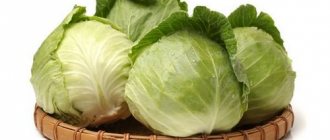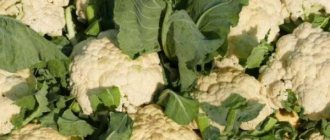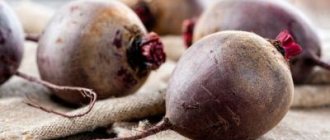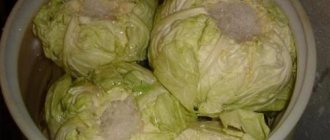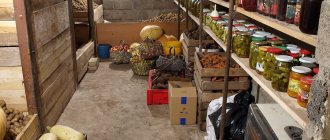Choosing a variety
At first glance, it seems that anyone can store cabbage for a long time in their own cellar in winter. But it is not so. The duration of savings directly depends on the selected variety. If you want to get fresh, elastic cabbage from the basement carefree, you need to put late-ripening heads of cabbage in the cellar in the fall. The growing season of such cabbage should not be less than four months.
Early ripening varieties are not stored for longer than 2.5 months. True, heads of mid-season varieties can be fresh all winter. For example, Gift, Green Hectare 1432, Glory. Well, some late-ripening varieties (Amager, Zimovka and others) can be preserved until the summer. Morozko will remain until the new harvest. Garant F1 will remain fresh until June. By the way, this hybrid has a wonderful taste. Watch the video, it also talks about other cabbage hybrids that are perfectly stored in the basement in winter.
But not all people grow cabbage on their own. Someone is going to store cabbage bought at the market in the cellar in winter. It is important for them to focus on the appearance of the head of cabbage. After all, not every seller can truthfully answer what variety he sells. If the fork is loose and oblong, it should not be placed in the basement. It won't last long. Most often, the fruits of early ripening varieties look like this. Some unscrupulous farmers grow several crops of early cabbage per year and “sell” them to people far from dacha life under the guise of late varieties and hybrids. Therefore, be careful!
What you need are round-flat, dense forks. And one more subtlety. You cannot buy cabbage for storage before mid-September. Real mid-season and late-ripening varieties ripen only at the beginning of autumn, and some are removed from the beds only in November. So don't rush!
Preparing the cellar for winter
Cabbage can be stored in the basement in winter for a long time if you completely get rid of dampness. Otherwise, the crop will begin to mold and rot. Storage is allowed only in a well-ventilated area. In the summer, windows and doors to the basement should be opened. To eliminate moisture, boxes with salt, charcoal or absorbent are placed in the room.
Warehousing and storing cabbage in a cellar in winter is incompatible with rot and mold. You can get rid of them using special disinfectants. This procedure must be carried out twice a year.
Mold on the basement walls is removed with a brush.
Among radical methods, special checkers and tablets are very popular: their acrid smoke gets rid of microorganisms. A respirator is required when working with them. The checker is placed in a bucket, set on fire outside and brought into the basement. The door is tightly locked so that a draft does not interfere with disinfection. It is strictly prohibited to be inside while the checker is burning. This is interesting: what is needed to get rid of mold in the cellar.
The method allows you to eliminate not only mold, but also mites and insects. The remaining smell will keep them away for a certain period of time.
You can store cabbage underground for a long time only if there are no mice or rodents. All cracks and channels through which animals can get inside must be sealed with cement. If necessary, additional metal mesh is installed.
Mothballs, black root and mint are used to repel rodents. These substances are placed around the perimeter of the basement. Rodents will eat harmful food and get poisoned. However, it should not be eaten by pets. More recently, an industrial rodent repeller has gone on sale. It generates an ultrasonic signal that is irritating to them.
This is interesting: how to treat a cellar for mice.
Preparing the cellar and cabbage
Of course, a lot depends on the choice of variety. But it is also important to pay attention to the room where you plan to store the forks. That is, in order to store cabbage in the cellar for a long time, you need to prepare an underground warehouse. And first of all, you need to create an optimal temperature regime. In the cellar, indicators should not be lower than minus 1 degree, and not higher than plus 2 degrees Celsius.
You should also get rid of rodents in advance. And to prevent mold and pathogenic fungi and bacteria from settling in, the walls must be whitewashed. For this, a solution of quicklime is used. Before planting the cabbage, it also doesn’t hurt to ventilate the basement. Pay attention to ventilation. The warehouse for vegetables must be dry, ventilated and perfectly clean. Then it will be possible to store various types of cabbage in it, with the exception of tender broccoli. Its long-term storage is possible only in frozen form.
Cabbage should be harvested on a dry, sunny day. It is not recommended to cut off the forks; it is better to dig them up along with the roots. This way they last longer. Before planting, cabbage should be inspected and all excess outer leaves removed. Leave 2-3 green leaves, no more. So, with the preparations out of the way, let's look at the simplest, yet most effective saving methods.
Storing cabbage for the winter: basic rules
- Heads of cabbage are harvested for storage when the weather is sunny and dry. They are pulled out of the ground along with the roots and stalks, and the remaining soil is shaken off. Next, the top leaves are removed. Later, depending on the chosen method of saving, the cabbage stalk is either left or cut off approximately at the level of the upper leaves;
- For long-term storage, only those heads that are not cracked, dense and have no signs of damage or rot are suitable;
- There is no need to leave large heads of cabbage for storage; they are best suited for preparations, and medium-sized forks should be stored;
- Since the forks need to “rest” thoroughly and dry from moisture, after harvesting from the garden bed they are laid out on the veranda or in a cold storage room for a couple of weeks;
- Before sending the cabbage for storage, remove all the upper leaves that are damaged or contaminated and carefully check whether the surface of the leaves remains dry. Since remaining moisture can contribute to the development of various mold and fungal infections;
- In the underground it is necessary to limit the access of rats (other rodents), as this is often found in private cellars.
The vegetable is extremely demanding in terms of storage conditions. Consistency of humidity (no higher than 80%) and temperature (no more than +5°C is an important condition for its preservation. Temperatures from 0 to +2° are optimal. Forks, if temperatures are low, quickly begin to freeze and deteriorate, and their useful properties are also reduced In warm underground floors (cellars), cabbage heads dry out and germinate faster.
Storage methods
There are many ways to store cabbage in the cellar in winter. Each of them has both advantages and disadvantages. Let's look at them so you can choose the best option for yourself.
Garter (video)
The easiest way. It consists of hanging cabbage in the cellar by its stems. Of course, the roots must be thoroughly cleaned from the soil. For storage, a wooden strip is strengthened in the ceiling and nails are hammered onto it. It is on them that the heads of cabbage are hung with a string. This way cabbage is stored for a very long time and does not spoil.
If any arb looks suspicious, it will immediately become noticeable. Cabbage in a suspended state is clearly visible and ventilated. Every head of cabbage is available. True, you can’t place a lot of vegetables this way, which is a minus. However, it all depends on the size of the cellar.
Wooden boxes
Another simple way to store cabbage in the cellar in winter is to place the garden crop in wooden boxes. Here, a lot depends on the preparation of the container and the quality of the heads of cabbage. The boxes must be clean and breathable. Space must be provided between the slats for ventilation of the product. The roots and stems of cabbage should be cut off. Damaged leaves must also be removed.
Under no circumstances should drawers be closed. Yes, and they need to be placed in one row, and only on stands. Wooden blocks are best suited for this. That is, air must enter the container from the sides and bottom. The method is very simple, but in terms of efficiency it is inferior to others, since the forks, coming into contact with each other, after a while begin to rot.
Cling film (video)
To keep cabbage fresh in the cellar until spring, you can wrap it in plastic cling film. It is sold in all grocery stores. It can also be purchased at markets and in household goods stores.
The storage method is very simple: the heads of cabbage are cleaned of excess outer leaves, leaving 2-3 leaves, and wrapped in several layers of film. In this case, the polyethylene must be pressed tightly against the vegetable so that there are no air pockets.
In this form, cabbage can be stored for a very long time, since there is no access to air and moisture to the forks. In addition, the film achieves a high level of product hygiene. And the heads of cabbage stacked on the shelves of the cellar look beautiful.
In a paper wrapper (video)
Similar to the method described above, preserving cabbage in the cellar in winter using paper wrapper. The heads of cabbage are wrapped in paper several times and placed in bags, which are then placed on basement shelves. Cabbage in this form is protected from moisture and light does not reach it. The heads of cabbage do not touch each other.
In this wrapper, each fork is in an excellent thermal insulation environment. But due to the access of air, after some time the forks may begin to rot. Therefore, when deciding whether film or paper is better for storage, it is better to give preference to the former.
Please note that you cannot use newspapers to wrap the cabbage. Otherwise, it is impossible to avoid getting harmful substances (in particular, lead) into your food, which are found in abundance in printing ink. It is better to use ordinary craft or baking paper, parchment.
In sand
To preserve all the nutrients and vitamins in cabbage, you can use another simple method - storing it in sand. To do this, the heads of cabbage located in containers (boxes, barrels, bags) need to be covered with clean, dry sand. You can make it even simpler: lay out the entire harvest at the bottom of the cellar and sprinkle sand on each fork.
Of course, the method is not clean, much less sterile. But cabbage can be successfully preserved in this way until mid-spring and even June. Here a lot depends on the variety and temperature conditions of the basement.
Methods for storing cabbage in autumn-winter-spring in the basement or cellar
There are various ways to store this vegetable, in which cabbage can retain its original appearance and taste for several months. Most summer residents adopt the following methods:
In bulk
When the heads are put in large piles in one of the corners of the storage. They should not exceed 3 m in height. At the same time, the heads of cabbage need to ensure increased circulation of air masses. That is why, when laying heads of cabbage in piles, they should not be placed too tightly. There should be voids between them, through which air will penetrate into the cabbage pile. Otherwise, the entire vegetable harvest may turn into a rotting and smelly mass (here is more information about why cabbage rots during storage). When laying cabbage in rows, the stump should be directed straight up.
On wooden racks
When the heads are stacked in one row with the stumps facing up. It is best to place the cabbage so that the heads do not touch each other. This arrangement of heads of cabbage will prevent the spread of rot.
On wooden pallets or wire crates
Vegetables should be located 20-25 cm from the floor. Place the heads on pallets or boxes with the stumps facing up.
In large boxes of sand
This method is not widely used, although it is quite effective. To preserve the heads, they are buried in sand poured in large boxes without holes. In this case, the vegetables should not touch each other.
In earthen trenches or holes
Owners of cellars with earthen floors can maximize the storage time of cabbage by burying it in small trenches dug directly into the cellar floor. When preparing the holes, we fill them with clean river sand, into which we place the heads of cabbage.
In cling film
This method uses cling film, in which we tightly wrap the healthy heads. We place the prepared vegetables on racks. When using this storage method, limited air access does not allow the heads of cabbage to spoil, so they remain fresh for a very long time. This also prevents the spread of rot.
From the roots
Some summer residents who have a cellar store cabbage in a special way. When harvesting, the heads of cabbage are not cut off, but pulled out by the roots. Then the cabbage heads with a few healthy covering leaves are buried in the ground in the cellar. This method is very effective for red cabbage.
Hanging
The following method for this vegetable is very effective, in which the heads are suspended from a pole or ceiling. For this purpose, heads of cabbage with a whole stalk are used. To save space, the heads of cabbage are tied in pairs by stumps. They are thrown over a pole or rope.
In paper or polyethylene
With this storage method, we wrap all heads in thick paper or place them in a plastic bag. When using bags, do not tie them.
How long can cabbage be stored in the cellar?
The keeping quality of cabbage heads depends on various factors, including the storage methods listed above. On average it ranges from three months to six. Although you can store cabbage in the cellar not only in winter, but also in spring, summer - in a word, until the new harvest. It depends on the variety. White cabbage hybrids remain green and fresh for more than six months.
Other types of cabbage, such as cauliflower, kohlrabi and Romanesco, can also be preserved for a long time. But it should be noted that the latter is very afraid of light. Therefore, for preservation, the vegetable should be tightly packed.
Preparing the Basement and Grocery Neighborhood
Not only cabbage forks are left in the basement for the winter, but also other types of vegetables. Cabbage can be adjacent to them, but you need to make sure that it lies separately, without coming into contact with other vegetables. You also need to regularly sort through your supplies and immediately remove spoiled heads, as they will lead to accelerated spoilage of all other stored vegetables, not just cabbage.
Storing carrots: choosing materials and fillers This is one of the most useful and popular vegetables on our table. How to store carrots after harvesting: what...
Before sending cabbage forks and other vegetables, in order to prevent molding of stocks, the cellar must be well ventilated. At the same time, it is also recommended to pre-treat the room with copper sulfate; slaked lime is also suitable. It is important that there are no pests - rodents - in the basement. In private homes there are often mice or rats in the basement, and they love cabbage more than other vegetables. Therefore, you need to take measures in advance to prevent rodents.
It is possible to store cabbage forks in the cellar so that they do not become damp or moldy. To do this, you need to choose the right late-ripening variety with good keeping quality, sort and prepare the heads and carry out preliminary preparation of the room. When the cellar has been ventilated, treated and prevented from the appearance of rodents, the cabbage, subject to temperature and humidity conditions, can lie and not deteriorate until spring.
Useful tips
- If frosts hit unexpectedly, it is not recommended to cut the heads of cabbage. You need to wait for the frozen leaves to thaw, and only then prepare the cabbage for storage. Late varieties of white cabbage easily tolerate frosts down to minus seven degrees.
- To store cabbage in bulk in the cellar in winter (this method also exists, although it is ineffective), you need to lay grates of wooden slats on the floor, washed in a baking soda solution. It is also helpful to place straw under the forks. It will absorb excess moisture.
- In order for the heads of cabbage to remain fresh until May, you can dip each of them into a clay solution diluted to the consistency of liquid sour cream. After this, be sure to dry it in the fresh air and hang it in the basement by the roots.
- If there is no cellar, several forks can be frozen in the freezer. The beneficial substances will remain, but the cabbage will lose its attractiveness. It is important to remember here that repeated freezing will ruin the vegetable. To freeze each fork, you need to carefully examine it to make sure that there is no caterpillar hidden in it. Then the heads of cabbage are thoroughly washed in running water, dried with a cloth and only then placed in the freezer. Cauliflower, Brussels sprouts, and broccoli are well stored frozen.
- If there is no cellar, some gardeners store cabbage in a specially dug hole. They put forks in it, cover it with sand, and throw tree branches on top, preferably pine spruce branches.
That's all the simple secrets on how to store cabbage in the cellar in winter. What methods and secrets of storing this unique vegetable do you know? Share information in the comments! Be sure to write if something doesn’t work out. Let's try to figure out the problem together.
Winter fork storage
You can preserve cabbage fresh until spring and without losing its beneficial qualities in the cellar. But, you need to choose suitable varieties whose growing season lasts about 200 days. These cabbage forks are harvested at the end of October, in the first ten days of November. Sometimes the harvest is harvested after the first frost, when the vegetable is a little frozen. This decision is justified, since after cooling the cabbage accumulates the highest concentration of glucose. But such heads of cabbage cannot always lie in the basement all winter.
How to make crispy sauerkrautSauerkraut is an indispensable winter table appetizer. It's not difficult to prepare. The main thing is to strictly follow the recommendations...
For better storage when harvesting, it is recommended not to cut off the heads, but to unscrew them from the garden bed. The day should be sunny, without precipitation. Then you need to let the vegetable sit for 24 hours - so that the forks dry out a little. When the weather is normal, it is acceptable to leave them in the garden. Only dense cabbage heads without signs of rot or damage are suitable for long-term storage. The top sheets must also be removed from them. The main thing is that the late-ripening variety has good keeping quality.
Of all the varieties of cabbage, the following are best suited for winter storage in the cellar:
- Wintering;
- Orbit;
- Turkiz;
- Glory;
- Amager;
- Moscow late.
Attention! Only strong and large enough forks can last for a long time, so it is better to recycle all small and damaged ones and make preparations for the winter from them - sauerkraut, canned cabbage and the like.
